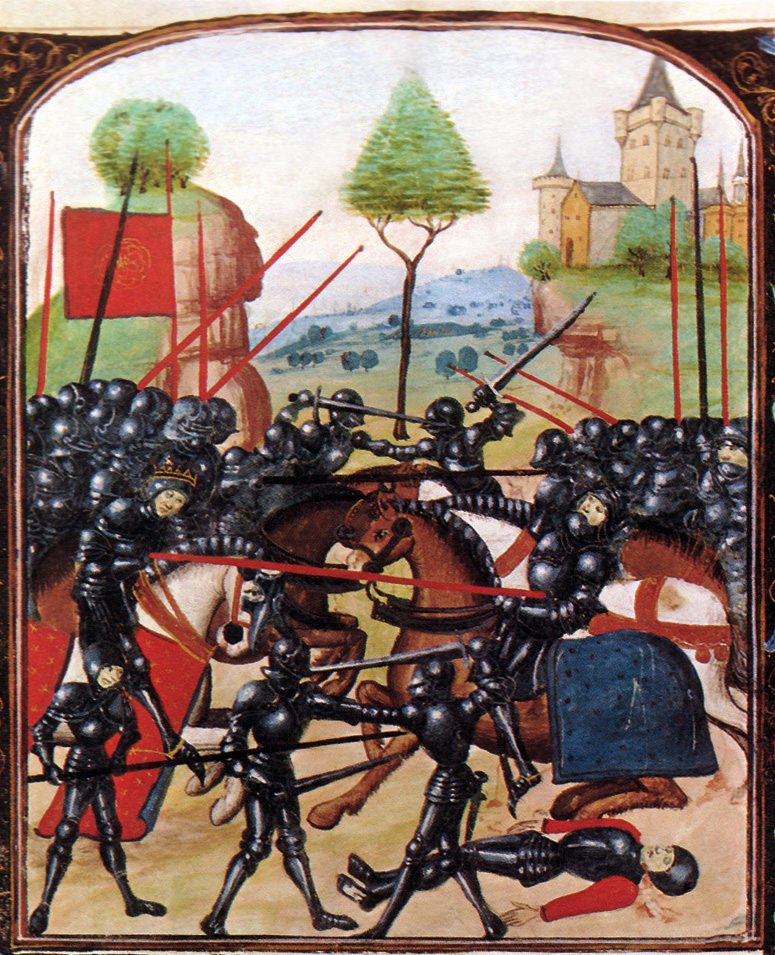The Wars of the Roses are among the most famous conflicts in English history. These series of dynastic wars saw the houses of York and Lancaster duke it out for more than 30 years. Bearing the White Rose of York and the Red Rose of Lancaster, the power hungry kings-to-be rode into battle to claim the greatest prize of all – the throne. Right? Well, not exactly.
If we were to use the term War of the Roses in 1485, as Richard III prepared his troops for their final clash at Bosworth Field, not a single person there would have had any idea what we were talking about. A white rose may have been vaguely recognised, but a white boar, on the other hand, would have been a very clear symbol of support. Not only did Richard III not use the white rose, but Henry VI never emblazoned the red rose on his standards at all.

That is not to say that the roses are a modern construction. The association of Lancaster with the red rose stretches back to the 13th century when Edmund Crouchback, 1st Earl of Lancaster, chose the flower for his emblem. It was also used in the following century by John of Gaunt, 1st Duke of Lancaster.
The White Rose and York has similar association, with Edmund Langley, 1st Duke of York, using it in the 14th century. Henry VI and Richard Plantagenet were descendants of these men, so linking the symbols to them, and the other Yorkist and Lancastrian leaders, isn’t entirely inaccurate. However, during the heat of the conflict, the strong association with the respective houses and these heraldic symbols simply didn’t exist.


For many, the scene that made the term Wars of the Roses famous was in Shakespeare’s Henry VI, where the respective leaders choose their roses in the Temple Garden:
PLANTAGENET
Let him that is a true-born gentleman
And stands upon the honour of his birth,
If he suppose that I have pleaded truth,
From off this brier pluck a white rose with me.
SOMERSET
Let him that is no coward nor no flatterer,
But dare maintain the party of the truth,
Pluck a red rose from off this thorn with me.
Of course the scene is entirely fictionalised, but considering Shakespeare’s popularity and sway over history, it’s a reasonable assumption to believe he popularised the term. However, by the time Shakespeare wrote this scene, the association between the roses and the houses was already well ingrained in the nation’s consciousness. So at what point between the Battle of Bosworth Field in 1485 and Shakespeare writing about them in 1592 did this term emerge? And why?

The answer is one that we today can easily understand – propaganda.
When Henry VII defeated Richard III at Bosworth Field, he claimed a very precarious throne. Thirty years of wars had shattered and fractured the land, and he faced the huge task of putting it back together to make it strong enough to hold a dynasty. To draw a line over the whole messy conflict, he chose to marry Elizabeth of York, thereby uniting the two houses as one. His heir, therefore, would be of Lancaster and York, a man, he hoped, the entire country could support as king.

In the 15th Century, symbols and heralds gave very powerful messages without the need for words. Identifying the two houses with these two similar, but different, symbols helped Henry’s cause immensely, and he exploited it for all it was worth. By uniting the two roses he could send a clear message about the strength and stability of the union between himself and Elizabeth.
The united roses, now known as the Tudor Rose, first appeared in a pageant held to receive the couple in York in 1486. When the young Prince Arthur was born later that year, however, the symbol was used to even greater effect. The so called ‘Round table’ at Winchester Castle was repainted with the Tudor Rose in the centre; it appeared in art, architecture and even in speeches carefully crafted by Henry’s court poets.
The propaganda campaign was so successful that, when Henry VIII was crowned, the poet laureate of the period, John Skelton, wrote:
The rose both white and red,
In one rose now doth grow.
Although the roses were distantly used for a symbol of the houses, it wasn’t until Henry VII decided to use them to secure his throne that they became instantly recognisable.
The term ‘Wars of the Roses’ however, wasn’t used at all in Henry’s time. But after the king’s thorough propaganda campaign, its creation seemed almost inevitable. In 1583, the phrase ‘the striving of the two roses’ popped up in a book by Sir Robert Smith, and many years later, in 1640, this had turned into ‘The Quarrel of the Two Roses’.
When David Hume wrote his hugely influential History Of England in the 18th century, he dubbed the conflict ‘The Wars of the Two Roses’. The man who finally popularised the term was no other than Sir Walter Scott, when he removed it from the history books and put it in his 1829 novel Anne Of Geierstein. Charles Dickens then adopted it too and the term became known to any Victorian reader. Although many historians would claim that the Wars of the Roses is an inappropriate term for a conflict where few of the combatants actually wore roses, thanks to Henry’s VII’s clever propaganda, the term has entered the nations subconscious and well and truly stuck.
To help dissect the origins of more historical terms, pick up the new issue of All About History or subscribe now and save 25% off the cover price.
References:
- Great Tales From British History, Robert Gambles
- http://www.theguardian.com/books/2012/mar/02/tudors-henry-vii-wars-roses?INTCMP=SRCH
- Heraldry, Pageantry, and Social Display in Medieval England, Adrian Ailes
